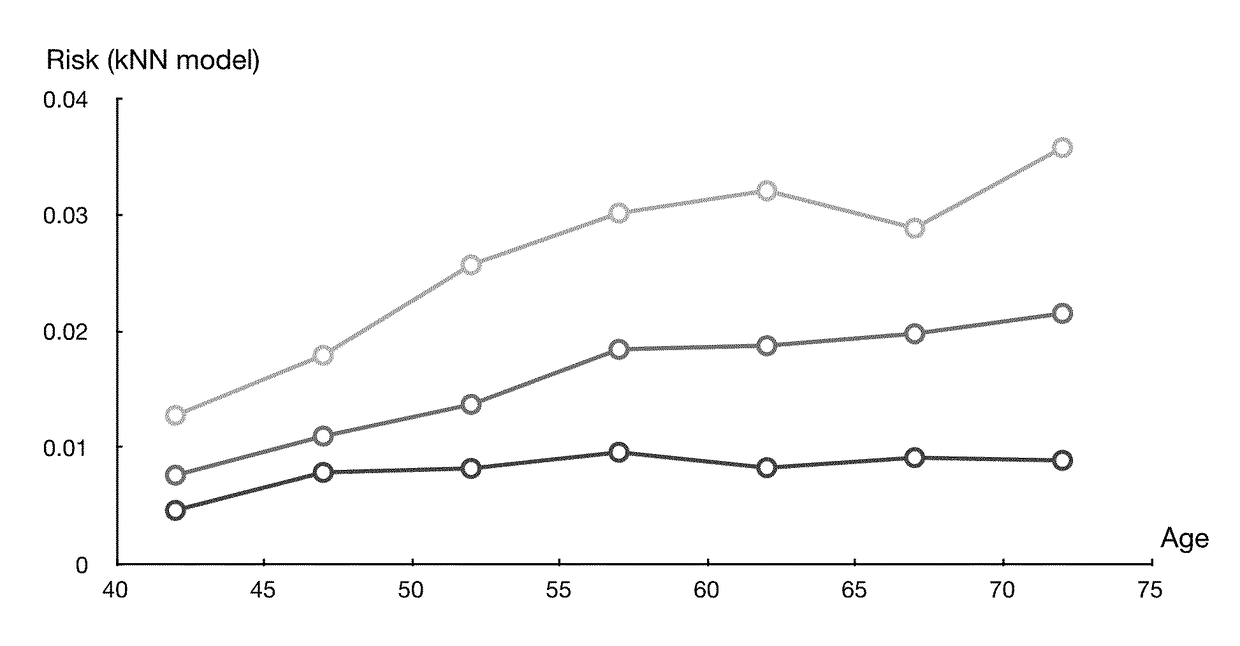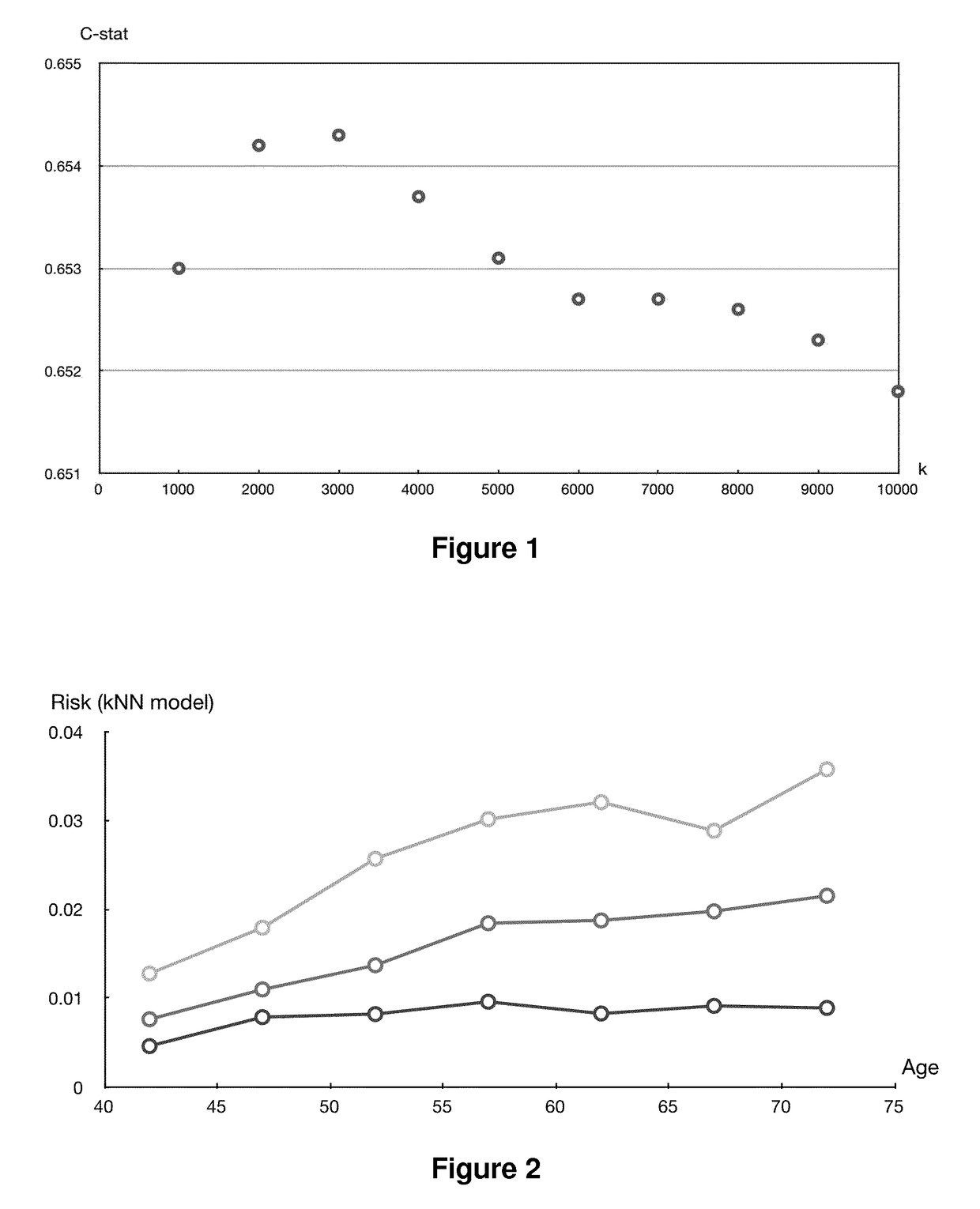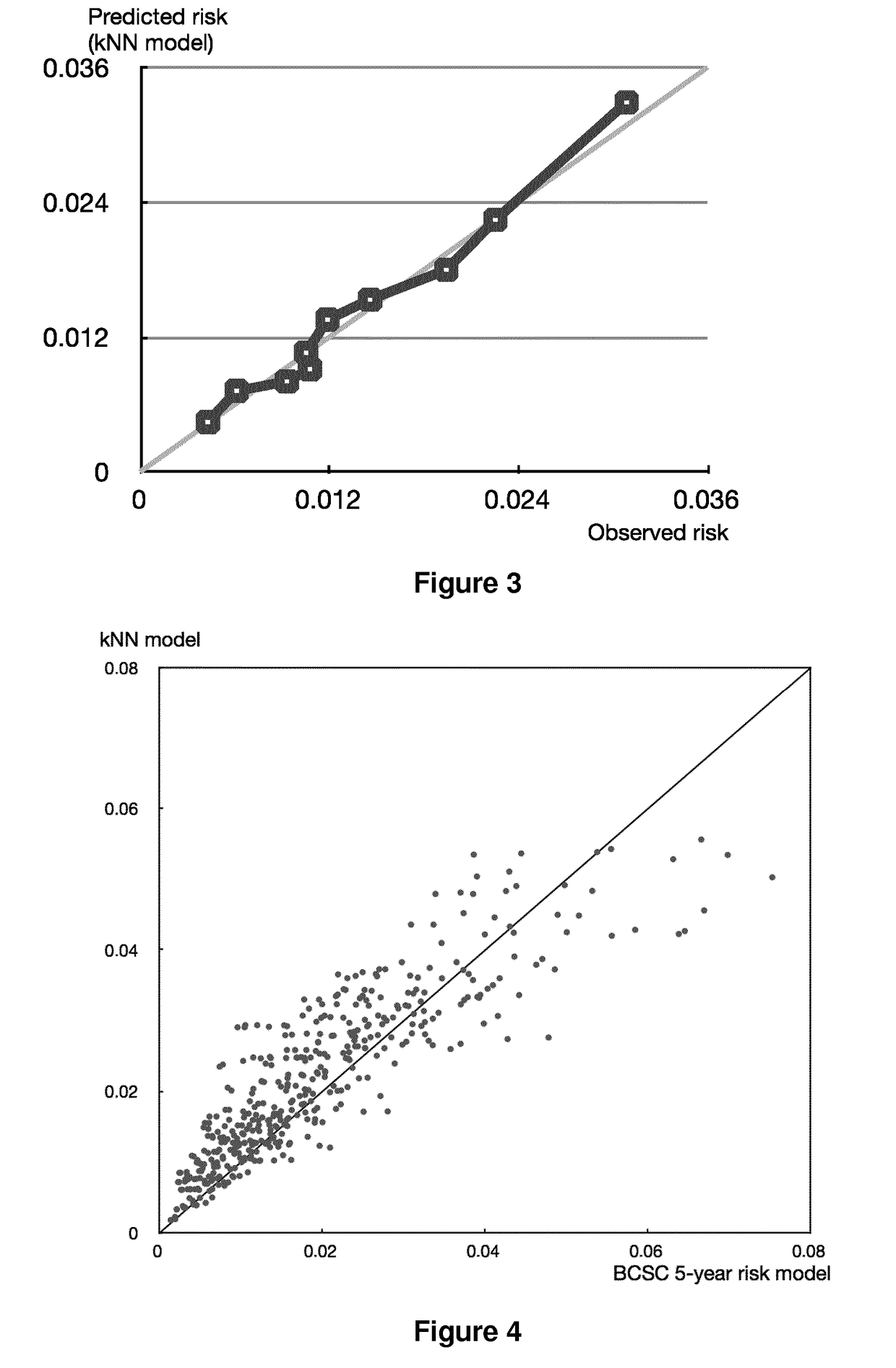Method for prognosing a risk of occurrence of a disease
a risk and disease technology, applied in the field of disease risk prognosis, can solve the problems of screening causing false diagnosis, women also face a risk of overdiagnosis and overtreatment, and the public health problem is a major problem
- Summary
- Abstract
- Description
- Claims
- Application Information
AI Technical Summary
Benefits of technology
Problems solved by technology
Method used
Image
Examples
example
[0051]To test the method of the invention, its performance, discriminatory accuracy (overall and in sub-groups) and ability to classify women into clinically meaningful distinct risk groups were compared to those of the Breast Cancer Surveillance Consortium (BCSC) 5-year risk model built on the same data (Tice et al. (2008) Ann Intern Med 148:337-347). The correlation between the two models was evaluated.
Methods
Study Population
[0052]For the purpose of this study, the inventors used a subset of the data that were used for the construction and validation of the BCSC 5-year risk model (Tice et al. (2008) Ann Intern Med 148:337-347). Briefly, the original model used data from 1 095 484 women age 35 years or older who had at least 1 mammogram with breast density measured by using the Breast Imaging Reporting and Data System (BI-RADS) classification system in any of the seven mammography registries participating in the National Cancer Institute-funded Breast Cancer Surveillance Consortium...
PUM
 Login to View More
Login to View More Abstract
Description
Claims
Application Information
 Login to View More
Login to View More - R&D
- Intellectual Property
- Life Sciences
- Materials
- Tech Scout
- Unparalleled Data Quality
- Higher Quality Content
- 60% Fewer Hallucinations
Browse by: Latest US Patents, China's latest patents, Technical Efficacy Thesaurus, Application Domain, Technology Topic, Popular Technical Reports.
© 2025 PatSnap. All rights reserved.Legal|Privacy policy|Modern Slavery Act Transparency Statement|Sitemap|About US| Contact US: help@patsnap.com



